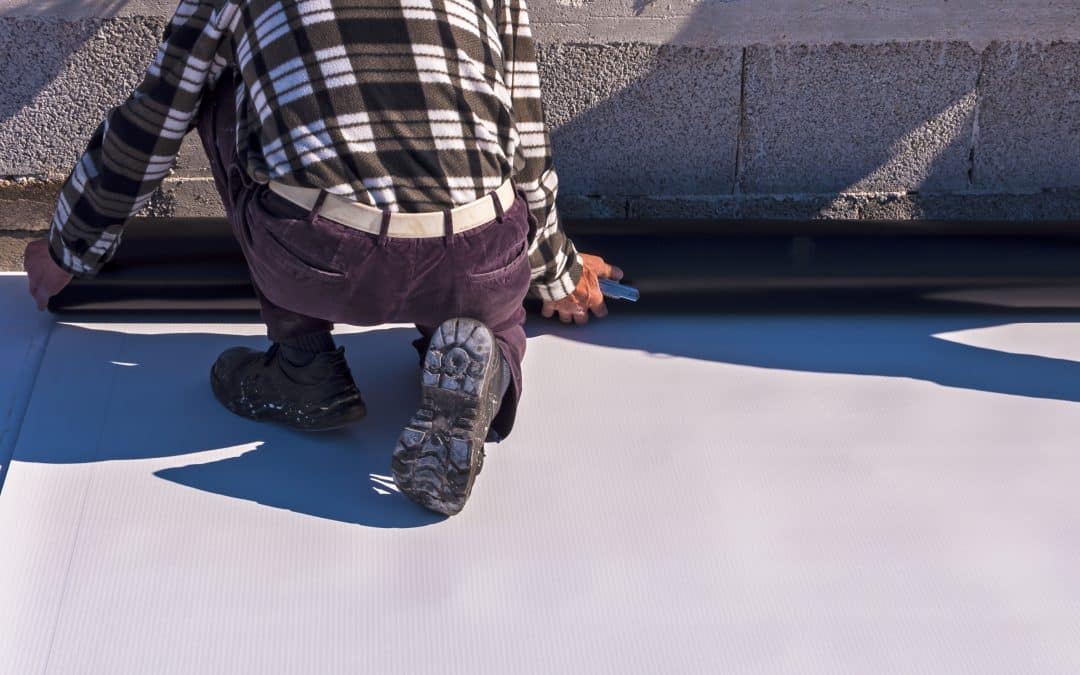Choosing the right roofing material is crucial for the durability and efficiency of your industrial building. Among various options, PVC roofing stands out for its robust performance in demanding environments. At our company, we specialize in providing PVC roofing solutions that meet the specific needs of industrial facilities. This introduction to PVC roofing will explore its significant benefits and why it’s a superb choice for industrial applications.
PVC, or polyvinyl chloride, is a material known for its strength and resistance to both chemical and weather-related wear. This makes it particularly valuable in industrial settings where roofs can be exposed to harsh conditions. Our experience has shown that a properly installed PVC roof not only protects your building effectively but can also contribute to reduced maintenance costs and energy savings due to its excellent thermal properties.
We focus on delivering roofing solutions that offer both performance and value. That’s why we advocate for PVC roofing for clients who require a reliable, long-term solution for their industrial buildings. In the following sections, we will delve into what makes PVC a superior choice, factors to consider before installation, the installation process itself, and tips for maintaining a PVC roof to maximize its lifespan and efficacy.
What Is PVC Roofing and Why Consider It for Your Industrial Building?
PVC roofing, or polyvinyl chloride roofing, is an excellent choice for industrial buildings due to its durability and resistance to environmental factors. This type of roofing material is made from a specialized plastic that is both flexible and strong, ensuring it can withstand the rigors of various weather conditions, including heavy rain, high winds, and extreme temperatures. One of the standout features of PVC roofing is its resistance to chemical exposure, making it ideal for industrial buildings that may emit or handle corrosive substances.
Besides its robust physical properties, PVC roofing is also prized for its energy efficiency. The material typically comes in lighter colors, which naturally reflect more sunlight and heat than darker roofs. This reflection helps to keep buildings cooler during the hot months, reducing the need for air conditioning and subsequently lowering energy costs. For business owners looking to optimize operational efficiency and maintain a green footprint, installing PVC roofing can be a strategic, cost-effective decision.
Key Factors to Consider When Selecting PVC Roofing
When deciding to install PVC roofing on your industrial building, several key factors need to be considered to ensure you get the most out of your investment. First and foremost, thickness is a crucial element. PVC roofing membranes come in a variety of thicknesses, typically ranging from 40 to 80 mils. Thicker membranes offer better durability and resistance, but they also come at a higher cost. Assessing your building’s exposure to physical and environmental stressors will help you determine the appropriate thickness needed.
Another important aspect is the quality of the PVC membrane. High-quality PVC roofing is treated with additives that enhance its resistance to UV rays, oxidative reactions, and microbial growth, all of which can significantly extend the lifespan of the roof. Additionally, consider the installation method that will be used. The options generally include mechanically attaching the roofing, adhering it using a special adhesive, or ballasting it with stones. Each method has its own benefits and suitability depending on the specific conditions of your roof structure and local climate. Consulting with roofing professionals, like us, who have extensive experience in installing PVC systems, will ensure that the selected roofing material and installation method are perfectly matched to your building’s needs.
Installation Process for PVC Roofing Systems
Installing a PVC roofing system requires precision and expertise to ensure that it performs to its fullest potential, safeguarding your industrial building against the elements. We begin by thoroughly cleaning the rooftop to remove any debris or remnants that could impede adhesion. Next, the installation process is determined by the specific needs of the building and local weather conditions, choosing between mechanically fastened, fully adhered, or ballasted systems. In a mechanically fastened installation, we carefully align and secure the PVC membrane to the roof deck using strong fasteners and barbed plates. This method provides exceptional resistance to wind uplift.
For a fully adhered setup, which is perfect for roofs with irregular shapes or numerous protrusions, we apply a specialized adhesive that firmly bonds the PVC membrane to the roof substrate. This method offers a smooth, clean appearance and added resistance to wind. Lastly, the ballasted approach involves laying the PVC membrane loose and using weight, such as river-washed stones or pavers, to hold it in place, ideal for roofs with limited penetrations and suitable structural support. Each method has its merits, and we ensure the chosen method aligns perfectly with the building’s specifications and your preferences.
Maintaining Your PVC Roof for Long-Term Performance
Regular maintenance is key to extending the lifespan of your PVC roofing and ensuring it continues to protect your industrial facility effectively. We recommend a bi-annual inspection to identify any potential issues such as punctures, membrane shrinkage, or seam defects that could lead to leaks or other damage. During these inspections, our skilled technicians will check for, and clear, any debris or blockages in the drainage system to prevent water accumulation, which can put undue stress on the roof structure.
In addition to professional inspections, we suggest a routine cleaning of the roof surface to remove pollutants and biological growth that can degrade the membrane over time. If tears or punctures are found, it is crucial to repair them promptly to avoid moisture infiltrating the building. Fortunately, with PVC roofing, repairs are straightforward and typically involve patching the affected area with a matching PVC material and welding it to create a seamless repair.
Conclusion
By choosing Mike Huddleston Roofing Systems, you’re opting for a trusted partner who will ensure your roofing investment is sound and secure, with a focus on long-term performance and satisfaction.
Our team is equipped to provide comprehensive care for your PVC roofing system, from meticulous installation to regular maintenance and prompt repairs. Ready for a roofing solution that offers both resilience and aesthetic appeal? Contact Mike Huddleston Roofing Systems today to discuss how we can enhance and protect your industrial facility with our expert PVC roofing services.

